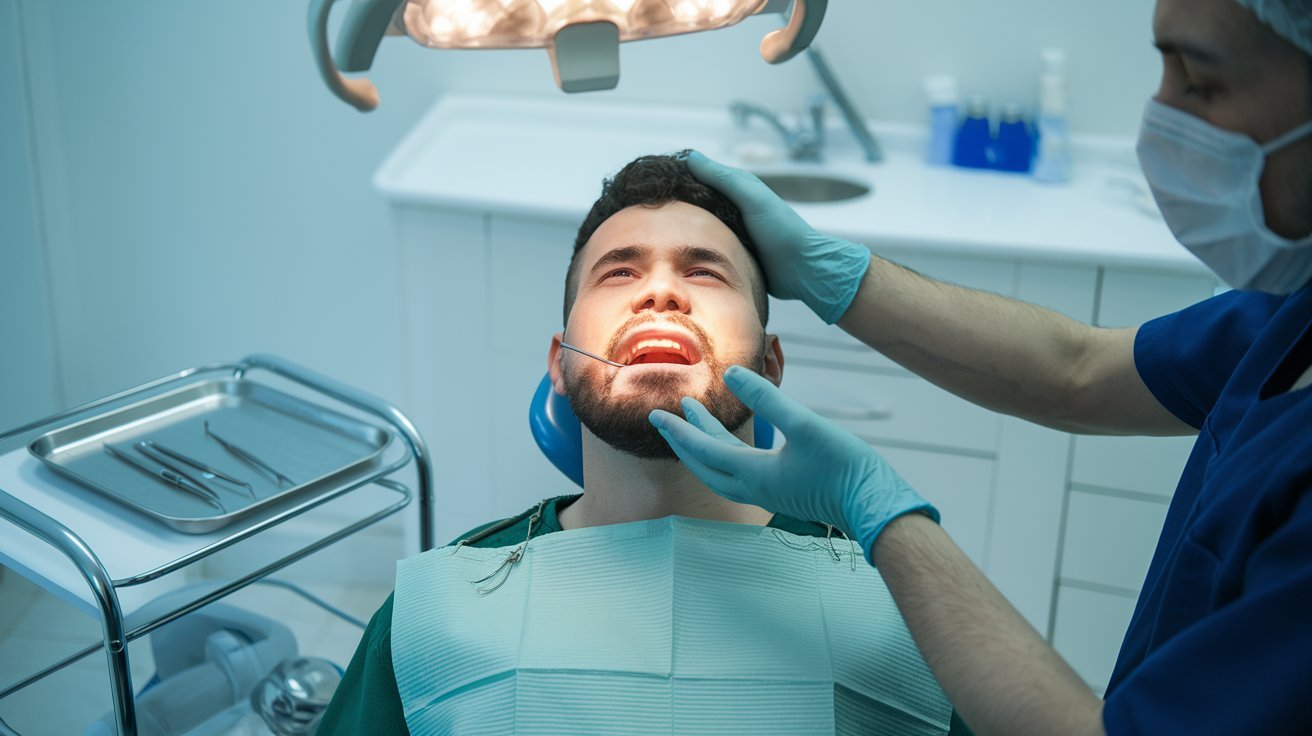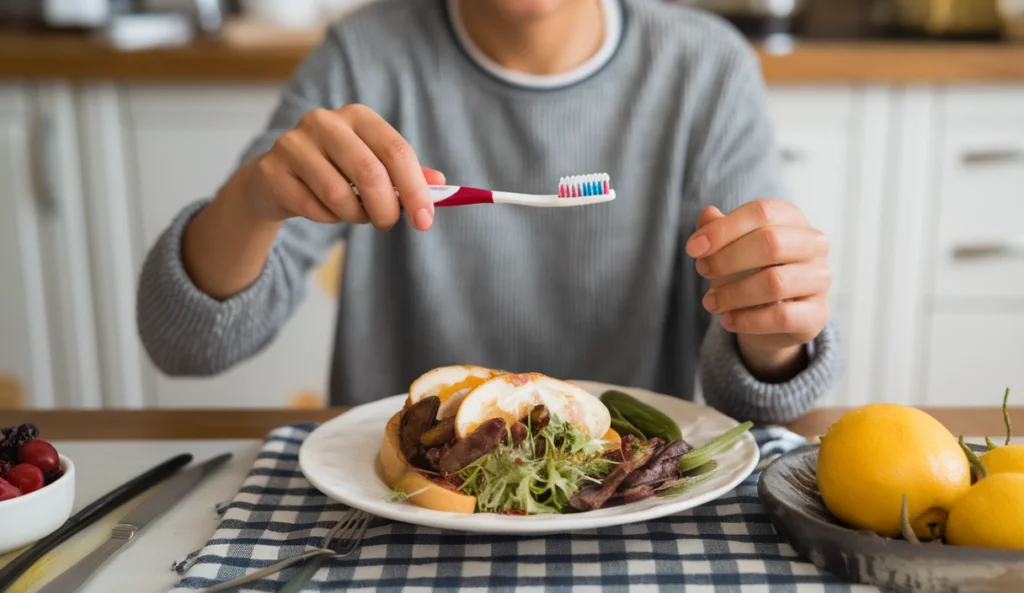
Picture this: You’ve just demolished a delicious meal with plenty of acidic tomato sauce or that tangy orange slice. Your first instinct? Grab the toothbrush and start scrubbing. But what if I told you that could actually be doing more harm than good? Yep, timing your tooth brushing isn’t as straightforward as you might think.
Most people get tooth brushing totally wrong. There’s a science to when and how you should clean your teeth after eating, and it’s way more complicated than the simple “brush immediately” rule we’ve all heard.
In this guide, I’ll break down exactly what happens in your mouth after a meal and the smart way to keep your teeth sparkling clean.
Why Waiting Matters: The Acid Attack on Your Teeth?
Let’s discuss something that not a lot of people are aware of—brushing right after meals can backfire. When you eat or drink, particularly if what you’re having is on the acidic side, your enamel takes a little hit.
It loses some of its structural integrity and becomes much more brushable, which is a funny way of saying that it’s kind of a bad time to brush because you’re putting undue stress on an already weak surface.
Citrus, soda, and vinegar are some of the worst offenders, but so are a bunch of healthy foods and drinks that are good for you but bad for your teeth.
Most people don’t know this: brushing right after eating can actually scrub away enamel that has been softened by the food. It’s as if we’re taking sandpaper to a wet surface, wearing down the natural defense mechanisms that our teeth have against cavities.
For instance, drinking orange juice and then immediately brushing can strip away microscopic layers of enamel that are essential for making our teeth last a lifetime.
You May Like: Can Stress Affect Oral Health? (Expert’s Guide)
The 30-Minute Rule: Your Tooth’s Recovery Time
Communing with the gut following eating concentrates brain waves. When we eat, there’s a neurohormonal response that coalesces around the preference for high-calorie foods and drives reward signals. In short, our brain is wired to desire and enjoy food. This makes the postprandial brain the ideal time for focusing on painful, long-lasting changes necessary to help you lose weight.
Consider your mouth’s natural protection system to be saliva. It contains the same minerals as your teeth and bones and even more. Saliva is an amazing substance, not just because of where it is found – in the mouth, the ducts leading to the mouth, and a good portion of the throat – but also because of what it can do.
Unfortunately, when people think of saliva, they often think of the wrong things. And here’s a secret not too many people are privy to: Saliva is the mouth’s main defense against cavities.
What to Do Immediately After Eating
While biding your time until you can brush, what can you do? Rinsing with water is an excellent first step. Water washes away food particles and neutralizes acid without the blade-like action of brushing. Chewing gum is another good move-though only if it’s sugar-free.
Gum gets your salivary glands working, and the saliva is your mouth’s first line of defense against cavities. “You want to get your salivary flow back to normal as quickly as possible,” says David Wong, an oral biology professor at UCLA.
Another rapid method to try is to consume a neutralizing food. Cheese and nuts, for instance, can turn the tide back in favor of your teeth. These foods are not acidic-they’re neutral or nearly so-so they can help create a more balanced state in your mouth. They’re also protective in that they’re not going to make matters worse.
When You MUST Brush Right Away
Immediate brushing might be required in rare situations when something excessively sugary or sticky has been consumed and is about to promote rapid bacterial growth. In such an instance, even a dentist might advise brushing immediately and gently. Again, the focus should be on brushing with soft, light strokes to avoid damaging your softened enamel.
The following might be cause for concern and warrant a trip to the dentist (or our Google Maps location): pain that is intense and or persisting; spots in your mouth that have turned an unexpected color; and any instance where food seems to have lodged itself in your mouth in such a way that it logically could lead to rapid putrefaction.
In stop-and-go brush mode, a soft-bristled toothbrush serves your teeth and gums well.
Brushing Techniques That Protect Your Enamel
Brushing is not uniform across the population. Everyone has their own way and rhythm to brushing their teeth. But even with all the individual style and flair that a person might bring to the event, some elements of brushing are non-negotiable.
These include using a soft-bristled toothbrush, a light touch, and the kind of motion that gets the sides of the teeth clean without damaging enamel over the long run.
Select a toothbrush with flexible, soft bristles that can easily wiggle between teeth without harming them. Your brushing should be more about the kind of thorough, gentle movements that ensure each surface is reached and less about any kind of scrubbing that would push your teeth into your gums.
Tooth care isn’t rocket science, but it’s more nuanced than most people realize. By understanding how food impacts your mouth and timing your brushing smartly, you can protect your smile without driving yourself crazy. Remember: it’s not just about brushing, but about brushing RIGHT.
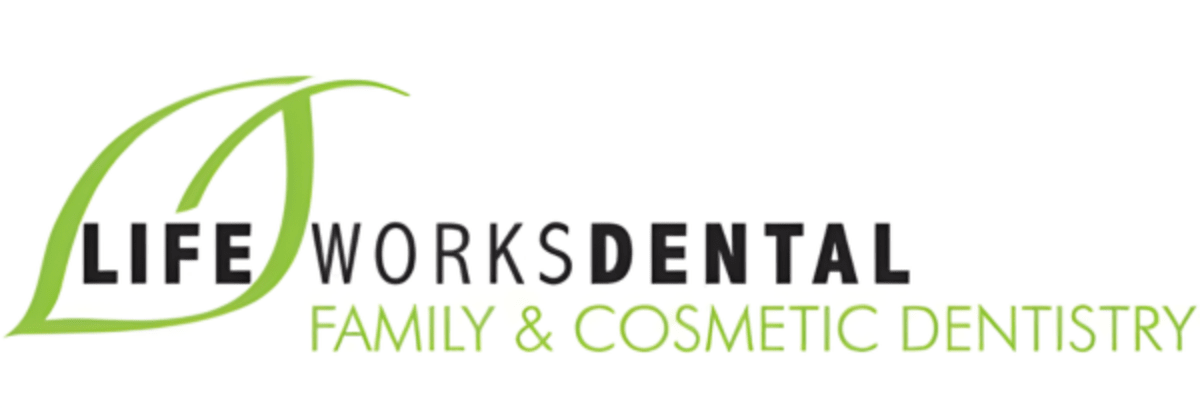
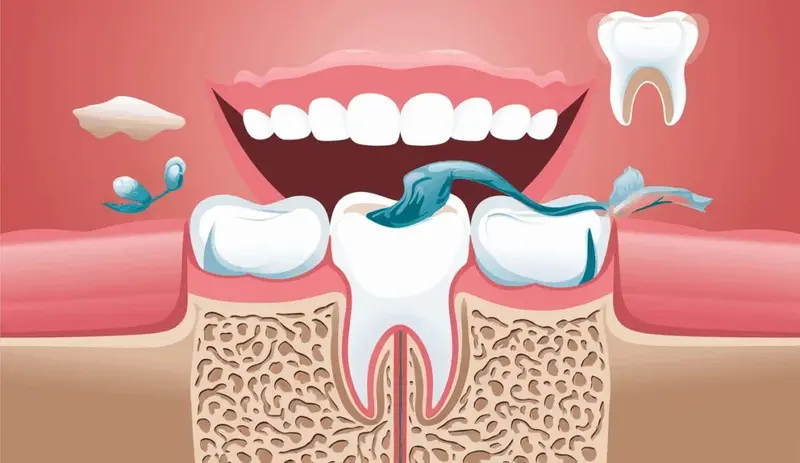
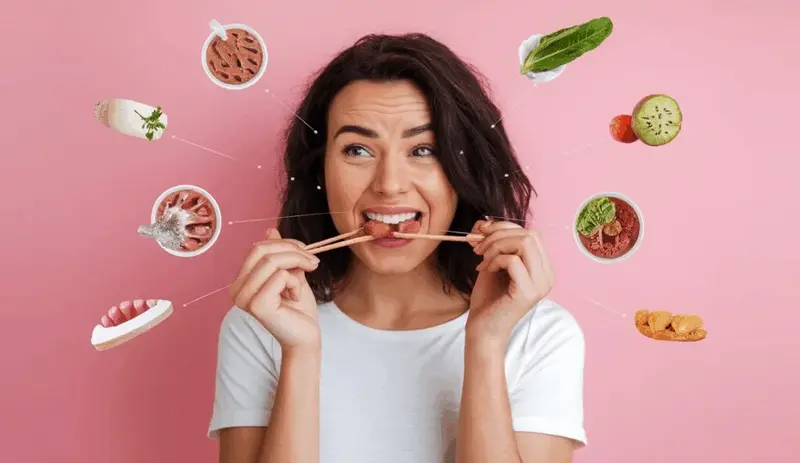
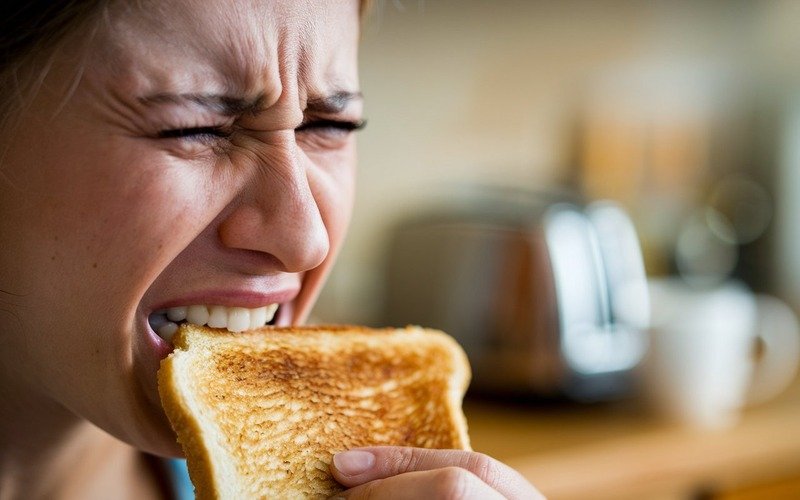
![Braces Cost in Houston 2025 [Affordable Treatment]](https://lifeworksdental.com/wp-content/uploads/2025/01/Braces-Cost-in-Houston-2025.jpeg)
